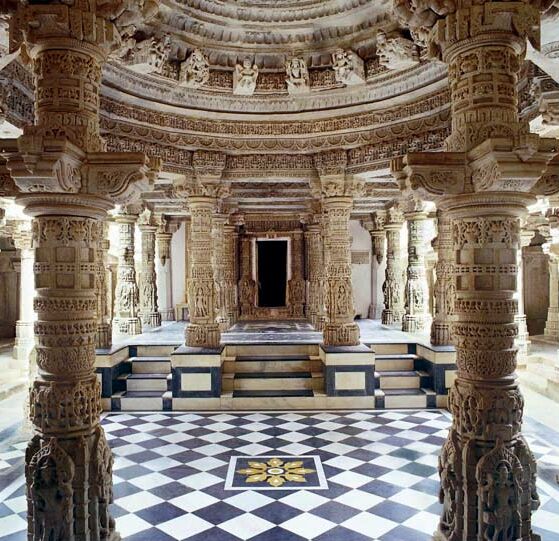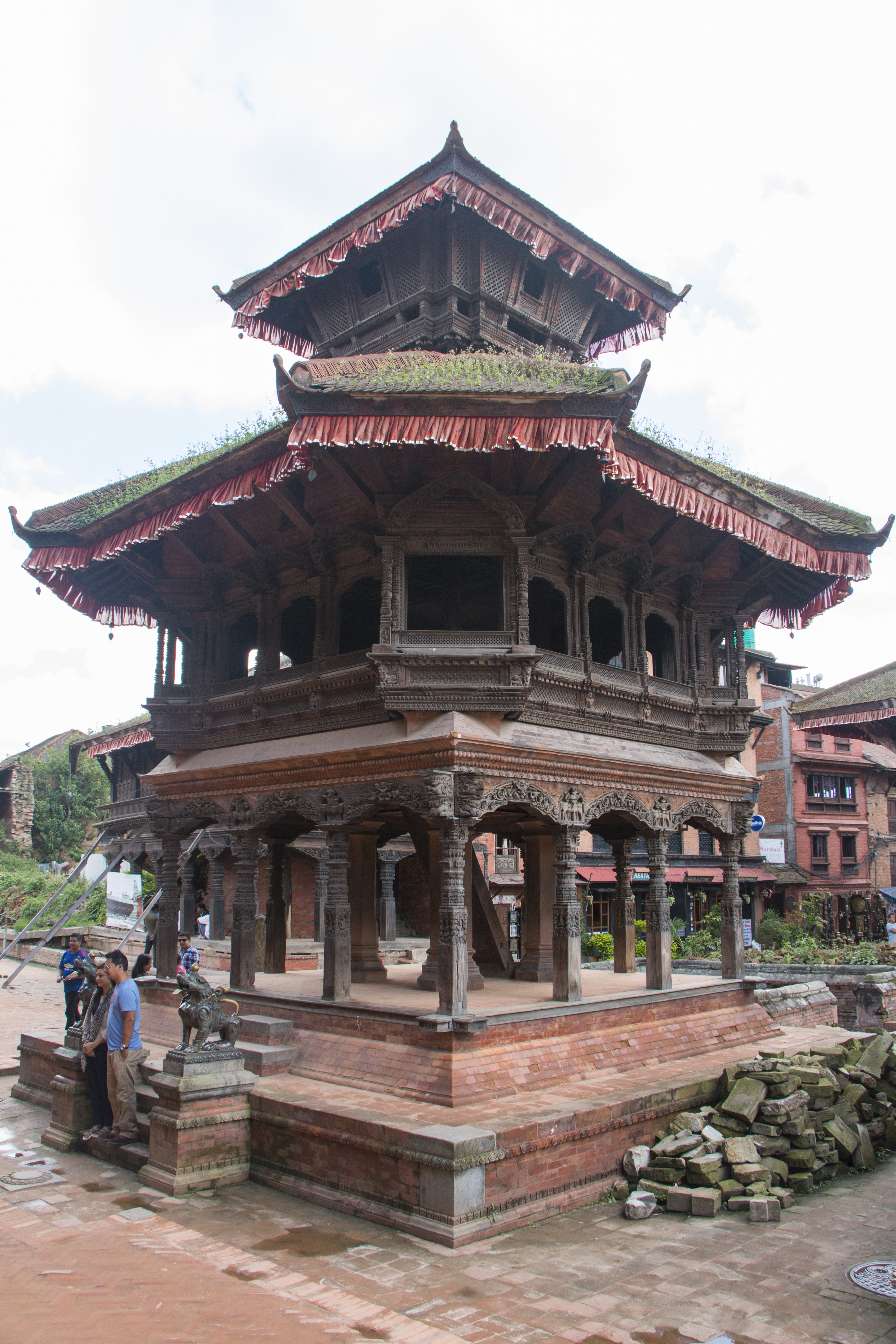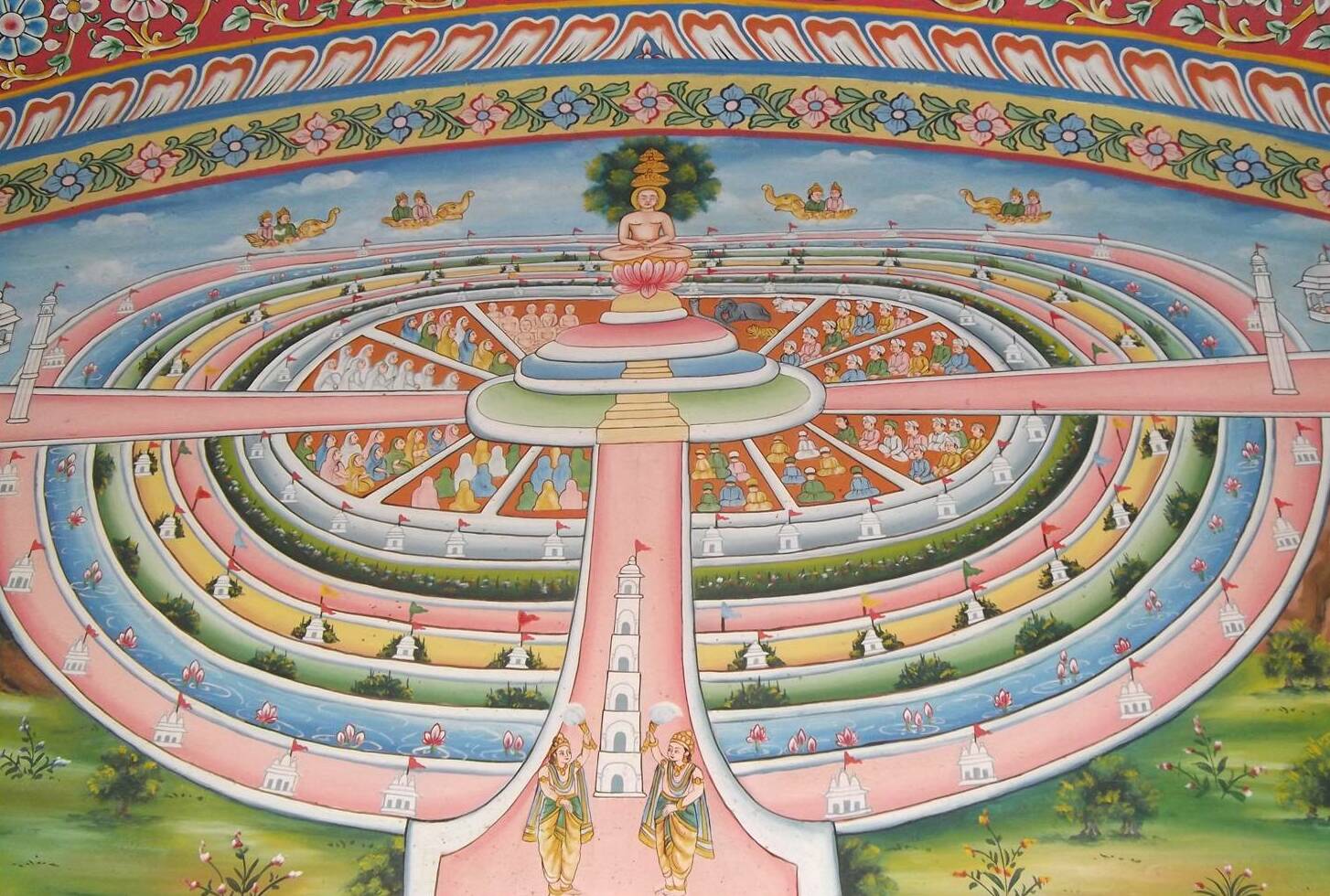|
Digamber Jain Mandir Hastinapur
Digamber Jain Bada Mandir Hastinapur is a Jain temple complex located in Hastinapur, Uttar Pradesh. It is the oldest Jain temple in Hastinapur dedicated to Shantinatha, the 16th Jain Tirthankara. History Hastinapur ''Teerth Kshetra'' is believed to be the birthplace of 16th, 17th and 18th ''tīrthaṅkaras'' namely, Shantinatha, Kunthunatha and Aranatha respectively. Jains also believed that it was here in Hastinapur, the first ''tīrthaṅkara,'' Rishabhanatha ended his 13-month-long penance after receiving sugarcane juice (''ikshu-rasa'') from King Shreyans. Digamber Jain Bada Mandir is the oldest Jain Temple in Hastinapur. The main temple was built in the year 1801 under the auspices of Raja Harsukh Rai, who was the imperial treasurer of the Emperor Shah Alam II. The 40 acre temple complex encloses a centrally located ''Mukhya Shikhara'' surrounded by a group of Jain temples dedicated to various ''tīrthaṅkara'', mostly built in the late 20th century. Architectur ... [...More Info...] [...Related Items...] OR: [Wikipedia] [Google] [Baidu] |
Jainism
Jainism ( ), also known as Jain Dharma, is an Indian religions, Indian religion whose three main pillars are nonviolence (), asceticism (), and a rejection of all simplistic and one-sided views of truth and reality (). Jainism traces its spiritual ideas and history through the succession of twenty-four , supreme preachers of ''dharma''. The first in the current time cycle is Rishabhadeva, who tradition holds lived millions of years ago; the 23rd is Parshvanatha, traditionally dated to the 9th century Common Era, BCE; and the 24th is Mahāvīra, Mahavira, who lived . Jainism is considered an eternal ''dharma'' with the guiding every time cycle of the Jain cosmology, cosmology. Central to understanding Jain philosophy is the concept of ''bhedavijñāna'', or the clear distinction in the nature of the soul and non-soul entities. This principle underscores the innate purity and potential for liberation within every Jīva (Jainism), soul, distinct from the physical and menta ... [...More Info...] [...Related Items...] OR: [Wikipedia] [Google] [Baidu] |
Jain Temples
A Jain temple, Derasar (Gujarati: દેરાસર) or Basadi (Kannada: ಬಸದಿ) is the place of worship for Jains, the followers of Jainism. Jain architecture is essentially restricted to temples and monasteries, and Jain buildings generally reflect the prevailing style of the place and time they were built. Jain temple architecture is generally close to Hindu temple architecture, and in ancient times Buddhist architecture. Normally the same builders and carvers worked for all religions, and regional and periodic styles are generally similar. For over 1,000 years, the basic layout of a Hindu or most Jain temples has consisted of a small garbhagriha or sanctuary for the main murti or idol, over which the high superstructure rises, then one or more larger mandapa halls. Māru-Gurjara architecture or the "Solanki style", is a particular temple style from Gujarat and Rajasthan (both regions with a strong Jain presence) that originated in both Hindu and Jain temples arou ... [...More Info...] [...Related Items...] OR: [Wikipedia] [Google] [Baidu] |
Post Office
A post office is a public facility and a retailer that provides mail services, such as accepting letter (message), letters and parcel (package), parcels, providing post office boxes, and selling postage stamps, packaging, and stationery. Post offices may offer additional services, which vary by country. These include providing and accepting government forms (such as passport applications), and processing government services and fees (such as road tax, Postal savings system, postal savings, or bank fees). The chief administrator of a post office is called a postmaster. During the 19th century, when the postal deliveries were made, it would often be delivered to public places. For example, it would be sent to bars and/or general store. This would often be delivered with newspapers and those who were expecting a post would go into town to pick up the mail, along with anything that was needed to be picked up in town. Before the advent of postal codes and the post office, postal syst ... [...More Info...] [...Related Items...] OR: [Wikipedia] [Google] [Baidu] |
Bhojnalaya
Marwari Bhojnalaya is a popular name among Marwari-style purely vegetarian restaurants in many cities in India. They are all independently owned. The term "marwari" implies that it is intended for Marwari merchants, who are strictly vegetarian and prefer relatively simple (which can be eaten daily) and inexpensive food. They are however popular among all vegetarians. The term "bhojanalaya" practically always implies simple and inexpensive vegetarian cuisine. Restaurants named "Jain Bhojanalaya" or "Vaishanva Dhaba" are also vegetarian. Note that restaurants are often called "hotel" in India. Some of them used to offer traditional seating on wooden patiyas on the floor, but the custom is no longer popular and tables and chairs are now more common. Cuisine In spite of the name, the food served is not necessarily Rajasthan style. For example, Dal-bati meals and dishes such as gatte ki kadhi which are quite popular in Rajasthan, are often not served, or served only on special occasion ... [...More Info...] [...Related Items...] OR: [Wikipedia] [Google] [Baidu] |
Dharamshala (type Of Building)
A dharamshala, also written as dharmashala, is a public resthouse or shelter in the Indian subcontinent. It also refers to Sikh places of worship before the introduction of Gurdwaras. Just as sarai are for travellers and caravans, dharamshalas are built for religious travellers at pilgrimage sites. In Nepal there are dharamshalas especially built for pilgrims as well as dharamshalas for locals. Etymology ''Dharamshala'' (Devanagari: धर्मशाला; ITRANS: Dharmashaalaa; IAST: Dharmaśālā) is a word (derived from Sanskrit) that is a compound of ''dharma'' (धर्म) and ''shālā'' (शाला). A loose translation into English would be 'spiritual dwelling' or, more loosely, 'sanctuary'. Rendering a precise literal translation into English is problematic due to the vast and conceptually rich semantic field of the word ''dharma'', and the cultural aspect of India. In common Hindu usage, the word ''dharamshala'' refers to a shelter or rest house for spiritual ... [...More Info...] [...Related Items...] OR: [Wikipedia] [Google] [Baidu] |
Neminatha
Neminātha (Devanagari: नेमिनाथ) (Sanskrit: नेमिनाथः), also known as Nemi and Ariṣṭanemi (Devanagari: अरिष्टनेमि), is the twenty-second tirthankara of Jainism in the present age (). Neminath lived 84,000 years before the 23rd ''Tirthankar'' Parshvanath. According to traditional accounts, he was born to King Samudravijaya and Queen Shivadevi of the Yadu dynasty in the north Indian city of Sauripura. His birth date was the fifth day of ''Shravan Shukla'' of the Jain calendar. Balarama and Krishna, who were the 9th and last Baladeva and Vasudeva respectively, were his first cousins. Neminatha, when heard the cries of animals being killed for his marriage feast, freed the animals and renounced his worldly life and became a Jain ascetic. The representatives of this event are popular in Jain art. He had attained ''moksha'' on Girnar Hills near Junagadh, and became a siddha, a liberated soul which has destroyed all of its ka ... [...More Info...] [...Related Items...] OR: [Wikipedia] [Google] [Baidu] |
Ambika (Jainism)
In Jainism, Ambika (, "Mother") or Ambika Devi ( "the Goddess-Mother") is the "dedicated attendant deity" or "protector goddess" of the 22nd Tirthankara, Neminatha. She is also known as ''Ambai'', ''Amba'', ''Kushmandini'' and ''Amra Kushmandini''. She is often shown with one or more children and often under a tree. She is frequently represented as a pair (Yaksha Sarvanubhuti on the right and Kushmandini on the left) with a small Tirthankar image on the top. The name ''ambika'' literally means mother, hence she is Mother Goddess. The name is also a common epithet of Hindu Goddess Parvati. Etymology The name Ambika is a Sanskrit word, that translates to mother. Legend According to Jain texts, Ambika is said to have been an ordinary woman named Agnila who became a Goddess. She lived in the city of Girinagar with her husband, ''Soma'' and her two children, ''Siddha'' and ''Buddha'' as per the Śvetāmbara tradition, or with her husband ''Somasarman'' and her t ... [...More Info...] [...Related Items...] OR: [Wikipedia] [Google] [Baidu] |
Mallinatha
Mallinatha (Prakrit ''Mallinātha'', Devanagari: मल्लिनाथ, Sanskrit: मल्लिनाथः, 'Lord of jasmine or seat') was the 19th tīrthaṅkara "ford-maker" of the present ''avasarpiṇī'' age in Jainism. In Jain history Jain texts indicate Mālliṇātha was born at Mithila into the Ikshvaku dynasty to King Kumbha and Queen Prajnavati. ''Tīrthaṅkara Māllīnātha'' lived for over 56,000 years, out of which 54,800 years less six days, was with omniscience ( Kevala Jnana). Mallinatha is believed to be a woman named Malli Devi by Shvetambara Jains while the Digambara sect believes all 24 tirthankara to be men including Māllīnātha. Digambara tradition believes a woman can reach to the 16th heaven and can attain liberation only being reborn as a man. Digambara tradition says Mallinatha was a son born in a royal family, and worships Mallinatha as a male. However, the Shvetambara tradition of Jainism states that Māllīnātha was female with a name ... [...More Info...] [...Related Items...] OR: [Wikipedia] [Google] [Baidu] |
Samavasarana
In Jainism, Samavasarana or Samosharana ("Refuge to All") is the divine preaching hall of the Tirthankara, stated to have more than 20,000 stairs in it. The word ''samavasarana'' is derived from two words, ''sama'', meaning general and ''avasara'', meaning opportunity. It is an important feature in Jain art. The Samavasarana seems to have replaced the original Jain stupa as an object of worship. Samavasarana In samavasarana, the ''tirthankara'' sits on a throne without touching it (about two inches above it). Around the tirthankara sit the '' ganadharas'' (chief disciples). Living beings sit in the following order: *In the first hall, ascetics *In the second hall, one class of deva ladies *In the third hall, '' aryikas'' (nuns) and laywomen *In the next three halls, three other classes of deva ladies *In the next four halls, the four classes of devas (heavenly beings) *Men, in the eleventh hall *Animals, in the last hall According to Jain texts, there would be four wide r ... [...More Info...] [...Related Items...] OR: [Wikipedia] [Google] [Baidu] |
Manastambha
In Jainism, a ''manastambha'' () is a pillar that is often constructed in front of Jain temples or large Jain statues. In North India, they are topped by four Tirthankara images. According to the ''Digambara'' Jain texts like '' Adi Purana'' and ''Tiloyapannati'', a huge ''manastambha'' stands in front of the '' samavasarana'' (divine preaching hall) of the tirthankaras, which causes someone entering a ''samavasarana'' to shed their pride. A monolithic manastambha is a standard feature in the Jain temples of Moodabidri. They include a statue of Brahmadeva on the top as a guardian yaksha. Examples Some of the well known Jain manastambhas are: * Kirti Stambha of Chittorgarh. The Vijaya Stambha was inspired by this. * Manastambhas of Devagarh * Manastambhas of Moodabidri * Manastambhas of Shravanabelagola * Manastambha at Shikharji at Madhuvan Manastambhas in South India are generally monolithic. Photo gallery File:Hutessing Temple3 Ahmedabad.JPG, Kirti Stambha of Hu ... [...More Info...] [...Related Items...] OR: [Wikipedia] [Google] [Baidu] |
Jain Cosmology
Jain cosmology is the description of the shape and functioning of the Universe (''loka'') and its constituents (such as living beings, matter, space, time etc.) according to Jainism. Jain cosmology considers the universe as an uncreated entity that has existed since infinity with neither beginning nor end. Jain texts describe the shape of the universe as similar to a man standing with legs apart and arms resting on his waist. This Universe, according to Jainism, is broad at the top, narrow at the middle and once again becomes broad at the bottom. Six eternal substances According to Jains, the Universe is made up of six simple and eternal substances called ''dravya'' which are broadly categorized under Jiva (Living Substances) and Ajiva (Non Living Substances) as follows: ''Jīva (Jainism), Jīva'' (Living Substances) * Jīva (Jainism), Jīva i.e. Souls – ''Jīva'' exists as a reality, having a separate existence from the body that houses it. It is characterised by ''chetan ... [...More Info...] [...Related Items...] OR: [Wikipedia] [Google] [Baidu] |
Mahavira
Mahavira (Devanagari: महावीर, ), also known as Vardhamana (Devanagari: वर्धमान, ), was the 24th ''Tirthankara'' (Supreme Preacher and Ford Maker) of Jainism. Although the dates and most historical details of his life are uncertain and varies by sect, historians generally consider that he lived during the 6th or 5th century BCE, reviving and reforming a proto-Jain community (which had possibly been founded by Pārśvanātha), and that he was an older contemporary of Gautama Buddha. Jains regard him as the spiritual successor of the 23rd ''Tirthankara'' Parshvanatha. According to traditional legends and hagiographies, Mahavira was born in the early 6th century BCE to a royal Kshatriya Jain family of ancient India. His mother's name was Trishala and his father's name was Siddhartha. According to the second chapter of the Śvētāmbara Ācārāṅga Sūtra, Siddhartha and his family were devotees of Parshvanatha. Mahavira abandoned all worldly p ... [...More Info...] [...Related Items...] OR: [Wikipedia] [Google] [Baidu] |






